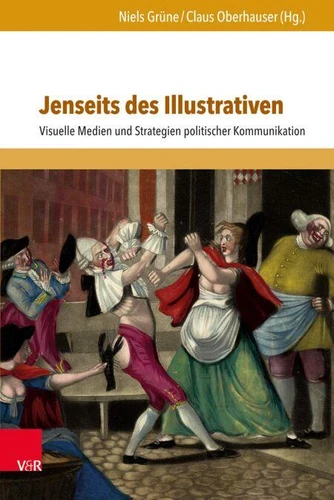Jenseits des Illustrativen. Visuelle Medien und Strategien politischer Kommunikation
Par : , , , ,Formats :
Disponible dans votre compte client Decitre ou Furet du Nord dès validation de votre commande. Le format PDF est :
- Compatible avec une lecture sur My Vivlio (smartphone, tablette, ordinateur)
- Compatible avec une lecture sur liseuses Vivlio
- Pour les liseuses autres que Vivlio, vous devez utiliser le logiciel Adobe Digital Edition. Non compatible avec la lecture sur les liseuses Kindle, Remarkable et Sony
 , qui est-ce ?
, qui est-ce ?Notre partenaire de plateforme de lecture numérique où vous retrouverez l'ensemble de vos ebooks gratuitement
Pour en savoir plus sur nos ebooks, consultez notre aide en ligne ici
- Nombre de pages278
- FormatPDF
- ISBN978-3-8470-0402-8
- EAN9783847004028
- Date de parution20/05/2015
- Protection num.pas de protection
- Taille16 Mo
- Infos supplémentairespdf
- ÉditeurV&R Unipress
Résumé
In multidisciplinary approaches and case studies, this volume combines two central fields of recent historical research from antiquity to the twentieth century: the own momentum of visual media and political communication beyond a narrowly institutional notion. The »political« is thought to be generally characterised by the striving for broad recognition of resources of authority. Political communication, therefore, revolves around regulatory provisions, rules of interaction and power relations and, above all, their collective acknowledgement.
From this perspective, a wide variety of pictorial rhetoric about obligation and liability comes into view. Extending the classical canon of political iconography, it ranges from individual works of art over artefacts distributed by mass media to performative acts as well as mental images and languages. In essence, the volume focuses on the contribution of visual (re-)presentations to such order-keeping and action-enabling discourses.
To what extent did and do actors rely on pictorial strategies of plausibilisation for legitimising their claims to normative hegemony?
From this perspective, a wide variety of pictorial rhetoric about obligation and liability comes into view. Extending the classical canon of political iconography, it ranges from individual works of art over artefacts distributed by mass media to performative acts as well as mental images and languages. In essence, the volume focuses on the contribution of visual (re-)presentations to such order-keeping and action-enabling discourses.
To what extent did and do actors rely on pictorial strategies of plausibilisation for legitimising their claims to normative hegemony?
In multidisciplinary approaches and case studies, this volume combines two central fields of recent historical research from antiquity to the twentieth century: the own momentum of visual media and political communication beyond a narrowly institutional notion. The »political« is thought to be generally characterised by the striving for broad recognition of resources of authority. Political communication, therefore, revolves around regulatory provisions, rules of interaction and power relations and, above all, their collective acknowledgement.
From this perspective, a wide variety of pictorial rhetoric about obligation and liability comes into view. Extending the classical canon of political iconography, it ranges from individual works of art over artefacts distributed by mass media to performative acts as well as mental images and languages. In essence, the volume focuses on the contribution of visual (re-)presentations to such order-keeping and action-enabling discourses.
To what extent did and do actors rely on pictorial strategies of plausibilisation for legitimising their claims to normative hegemony?
From this perspective, a wide variety of pictorial rhetoric about obligation and liability comes into view. Extending the classical canon of political iconography, it ranges from individual works of art over artefacts distributed by mass media to performative acts as well as mental images and languages. In essence, the volume focuses on the contribution of visual (re-)presentations to such order-keeping and action-enabling discourses.
To what extent did and do actors rely on pictorial strategies of plausibilisation for legitimising their claims to normative hegemony?






